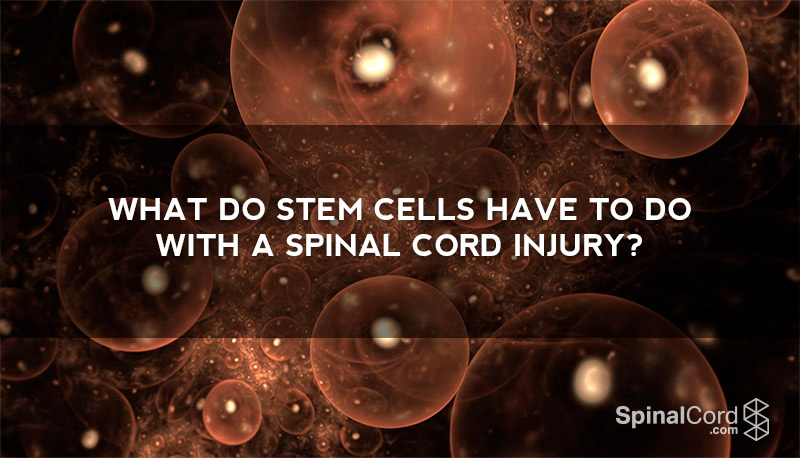What Do Stem Cells Have to Do with a Spinal Cord Injury?

You may have heard of stem cells in the news and that they are being used in medical research. This can be a controversial topic for many, but the fact is that the research is happening in specialties across the medical industry. Let’s start with the basics to clarify how stem cells are being used in research for spinal cord injuries.
What is the spinal cord?
This is the bundle of nerve fibers that transmits information between the brain and rest of the body, protected by the hard vertebrae spinal column. Made up of millions of nerve cells, when connected to the brain, this forms the central nervous system. Injury to the spinal cord can cause paralysis or even death, and there is currently no effective treatment.
What happens in spinal cord injuries?
Following an injury, the nerve cells and motor axons, which make up the spinal cord, are crushed and torn, and the insulating sheath around the axons begins to die. Any exposed axons begin to degenerate, which means the neuron connection is disrupted, and the flow of information between the brain and the spinal cord is subsequently blocked.
What does this mean for the body?
When this happens, the body is unable to replace lost cells from a spinal cord injury. As a result, their function becomes permanently impaired, leading to severe movement and sensation disability which doctors measure on various scales, including the American Spinal Injury Association Impairment Scale (AIS).
How can stem cells contribute to spinal cord repair?
Although the research is still in its infancy, professionals believe stem cells are an ideal answer to contribute to spinal cord treatment and repair. The two main characteristics of stem cells, which make them so well-suited for this use, is
- their ability for self-renewal, and
- their ability to become any cell in any organism with ease.
Stem cells, come from two main sources- embryonic stem cells from an embryo and somatic stem cells found throughout the body.
Studies in animals demonstrated that transplantation of stem cells contributed to the repair of spinal cord material. It did so in various ways, and these included the replacement of dead nerve cells; the generation of new cells to re-form the aforementioned insulating sheath around the axons, to stimulate the regrowth of damaged axons. It also acted to protect cells at the site of the injury from any further damage.
In prior testing situations, stem cells have been removed from brain tissue, nasal cavity lining, and tooth pulp for applications. This has only ever resulted in partial recovery of function, however, and remains in experimental stages.
There is controversy over this type of treatment at the moment; due to the fact stem cells need further research into how they behave and how they could work in a form of treatment. Stem cell behavior is directed by chemical signals, some of which are internal, and others of which are external and depend on the environment they find themselves in. These chemical signals would need to be created in the spinal cord environment in order to encourage relative growth and development.
Although stem cell treatment continues to be in testing stages, it is still a possible solution for repairing spinal cord injuries at some point in the future.
Do you enjoy keeping up on the latest spinal cord injury news and research? Subscribe to our journal and never miss a beat.
Stay Updated on Advancements On Traumatic Brain &
Spinal Cord Injuries
About the Author




